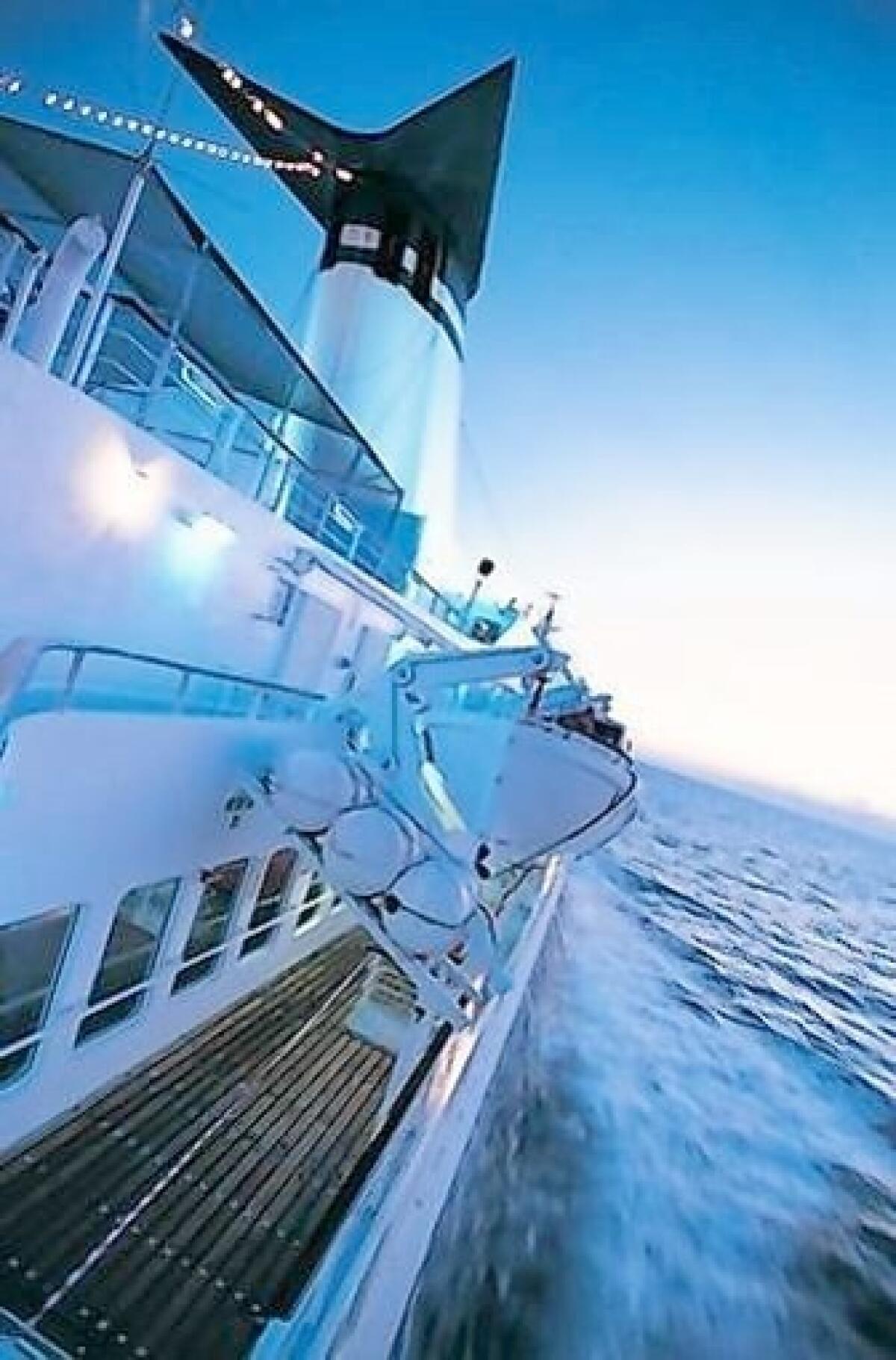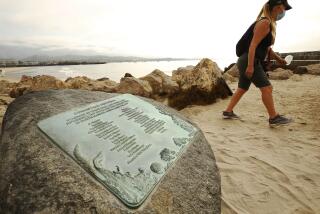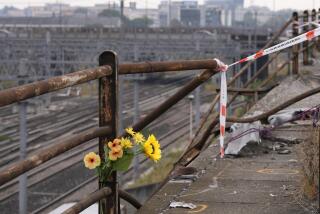Questions linger one year after the Costa Concordia disaster

More than a year after the Costa Concordia capsized off Italy, one big question still haunts survivor Michelle Barraclough: Why were no clear instructions given during the emergency?
“The crew had no idea what to do,” the Australian woman wrote on a blog posted soon after the wreck, “and the order to evacuate took [way] too long.”
The ship trembled and lights went out some time after the vessel struck a rock about 9:45 p.m. on Jan. 13, 2012. Passengers said they were told the problem was electrical, according to news accounts.
But the plates and glasses that started flying across the dining room told another story. Trying to perform a sail-by salute to the Italian island of Giglio, the Concordia suffered a long gash in the hull, flooding its six engines in a matter of minutes and sending it on a deadly roll onto its side into shallow water. The first alarm sounded about 10:30 p.m., the Associated Press reported. Passengers told the AP that the evacuation order came more than an hour after impact.
Of the 3,200 passengers and 1,000 crew on the Concordia, 32 people died.
The tragedy raised fresh questions about safety at sea and who regulates cruise lines, which carried 16 million passengers worldwide in 2011.
“The stigma, as far as the safety part of this goes, is going to take awhile to erase completely,” said Carolyn Spencer Brown, editor of the online travel website CruiseCritic.com.
That will be difficult as long as the Concordia remains where it is: The ship is still trapped where it capsized. As much as $400 million is being spent to salvage the wreck, but the work has been delayed until fall.
The fate of Capt. Francesco Schettino and eight others remains in the hands of Italian courts, which will decide in the spring whether they will be tried on criminal charges for their role in the disaster, the worst shipwreck in modern history.
Since the wreck, the cruise industry has introduced new policies to strengthen safety procedures that were much criticized in the aftermath. The industry also adopted procedures that address concerns about passenger muster drills, life jacket availability, bridge access and procedures, lifeboat training for crew members and more.
Christine Duffy, president and chief executive of Cruise Line International Assn., which represents 26 major cruise lines that operate in North America, said the new policies “exceed current standards, enhance safety and strengthen safety of passengers and crew members.”
Others say they’re not so sure. “They’re almost a knee-jerk reaction to issues unique to the Costa Concordia,” said Jim Walker, a Miami-based maritime lawyer. “There’s no teeth to any of this. It’s completely self-regulatory.”
Policies in place
Cruise Line International implemented 10 new policies that were phased in throughout 2012. The first change came less than a month after the disaster. Cruise ships now hold 30- to 45-minute muster, or lifeboat drills, before the ship leaves port to ensure that passengers know emergency procedures and locations of lifeboats.
Many cruise lines already adhered to this practice, but some didn’t because international law requires only that drills be held within 24 hours of passengers’ embarkation. The International Maritime Organization, which oversees ship safety and procedures, agreed to adopt this new policy as law this year, according to Cruise Line International.
The drills have changed too. Passengers now receive 12 specific instructions, including how to put on a life jacket, where life jackets are located (jackets are placed near lifeboats and muster stations where passengers can find them easily), how to account for passengers during a training drill or a real emergency, and what to expect if an evacuation is ordered. The idea is to standardize procedures across all ships.
About 700 people who boarded the Concordia in Rome never received the safety training before they left port, which might have contributed to the chaos during the evacuation.
“No one knew what they were doing,” said Georgia Ananias, a former elementary school principal from Downey. At least four times during the evacuation, she was certain death was imminent. She, her husband and two adult daughters were among the last to be rescued. Schettino, whom the media dubbed “Capt. Coward,” is accused of fleeing the ship before all passengers and crew were safely off.
The industry also added to its procedures the recording of passengers’ nationalities for search and rescue purposes, and the securing of heavy objects on ships.
The safety review and subsequent policies also examined ships’ passage plans and bridge procedures. Much of what happened on the Concordia between Schettino, his officers and the cruise company before and after the ship hit the rocks remains in dispute. Media accounts say ship owner Costa Crociere, a subsidiary of Miami-based Carnival Corp., blames the captain for deciding to make the reckless sail-by; Schettino says this was a common move that he was authorized to perform and that his officers should share the blame.
Now members of the bridge crew are briefed beforehand on passage plans, the route cruise ships take, to make sure they understand it and to make sure they “are asked and encouraged to raise any operational concerns without fear of retribution or retaliation,” according to the policy. To avoid distractions, access to the bridge is off-limits to all but essential personnel during arrivals and departures from port, heavy traffic or other periods. (During the Concordia investigation, a bridge officer told Italian magistrates that the ship’s head waiter and purser were chatting with Schettino when he hit the rocks, according to accounts in Italian newspapers.)
How are these enforced? Duffy said cruise line executives are required to verify that they are being followed, and companies risk being expelled from the association if they don’t follow through. Cruise Line International has brought nine trade groups under its umbrella, including the European Cruise Council and the International Cruise Council Australasia, to form a global association to set standards and policies.
Ananias, who had sailed on more than 60 cruises with her family before the Concordia wreck, called the new policies “insulting” and said the cruise industry needs a wake-up call.
“Can the industry change? Absolutely,” she said. “Will they do it? No, not until they realize that safety of passengers is the key to making this industry grow.”
Cruise Line International has always maintained that safety of passengers is paramount. Duffy told reporters in a December news conference about the review: “Without safety, there is no cruise industry.”
Ananias, who has a lawsuit pending against Costa Crociere, the Concordia’s owner, won’t set foot on a cruise ship until more safety measures are implemented. She declined to discuss details of those desired improvements.
Barraclough, meanwhile, signed up to sail on the South China Sea in October. In an email, she said she wants to regain what she once loved about going on a cruise and visiting new places every day.
And she hopes it might help her heal too.
The upcoming cruise, she said, could be a way “to try to put the nightmares and bad thoughts away, if we go on another cruise and it’s great like our past cruises. Then we can try to put the bad memories behind us.”
More to Read
Sign up for Essential California
The most important California stories and recommendations in your inbox every morning.
You may occasionally receive promotional content from the Los Angeles Times.











